What causes mold on houseplant soil and how do you get rid of it?
Curious to know what causes mold on houseplant soil? Follow these expert tips and learn how to prevent it

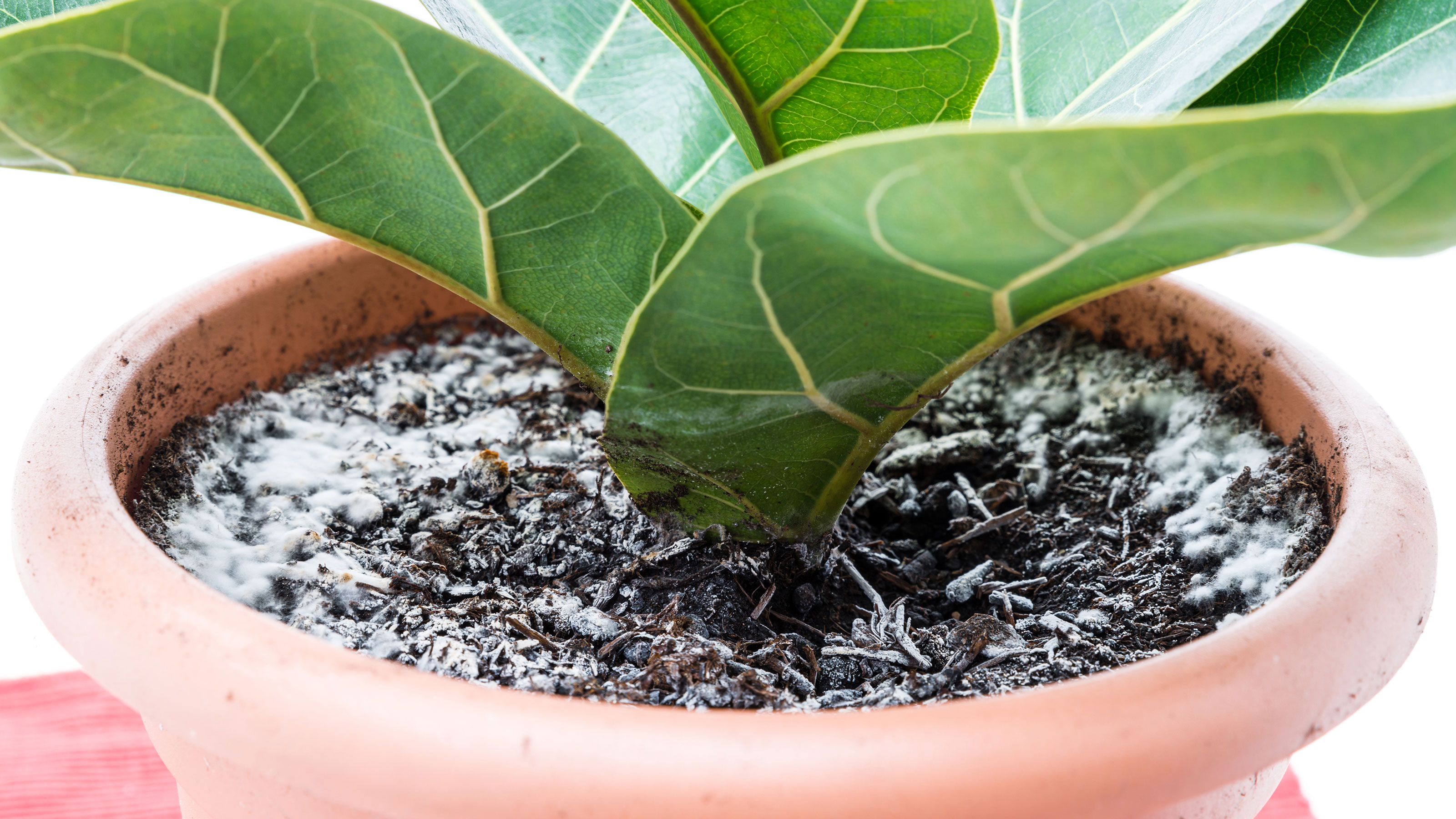

Recognising mold on houseplant soil and knowing how to get rid of it is key to growing healthy indoor plants. As well as looking unsightly this fast appearing soft, light-colored growth is a sure sign that growing conditions are less than ideal.
Appearing as a soft, white, or gray fuzz, and sometimes developing into a cobwebby mass, it can look alarming, but fortunately it is easy to deal with and with a few simple precautions, it can be kept at bay.
In most cases, the mold developing on indoor plant soil is harmless and poses no real threat to your plant, but it can indicate problems with the plant’s immediate surroundings, which will prevent it from thriving.
In this feature we not only consult the experts for the likely causes of mold but also share their top tips on how to get rid of it. Armed with this knowledge you can sit back and enjoy watching your healthy indoor plants flourish.
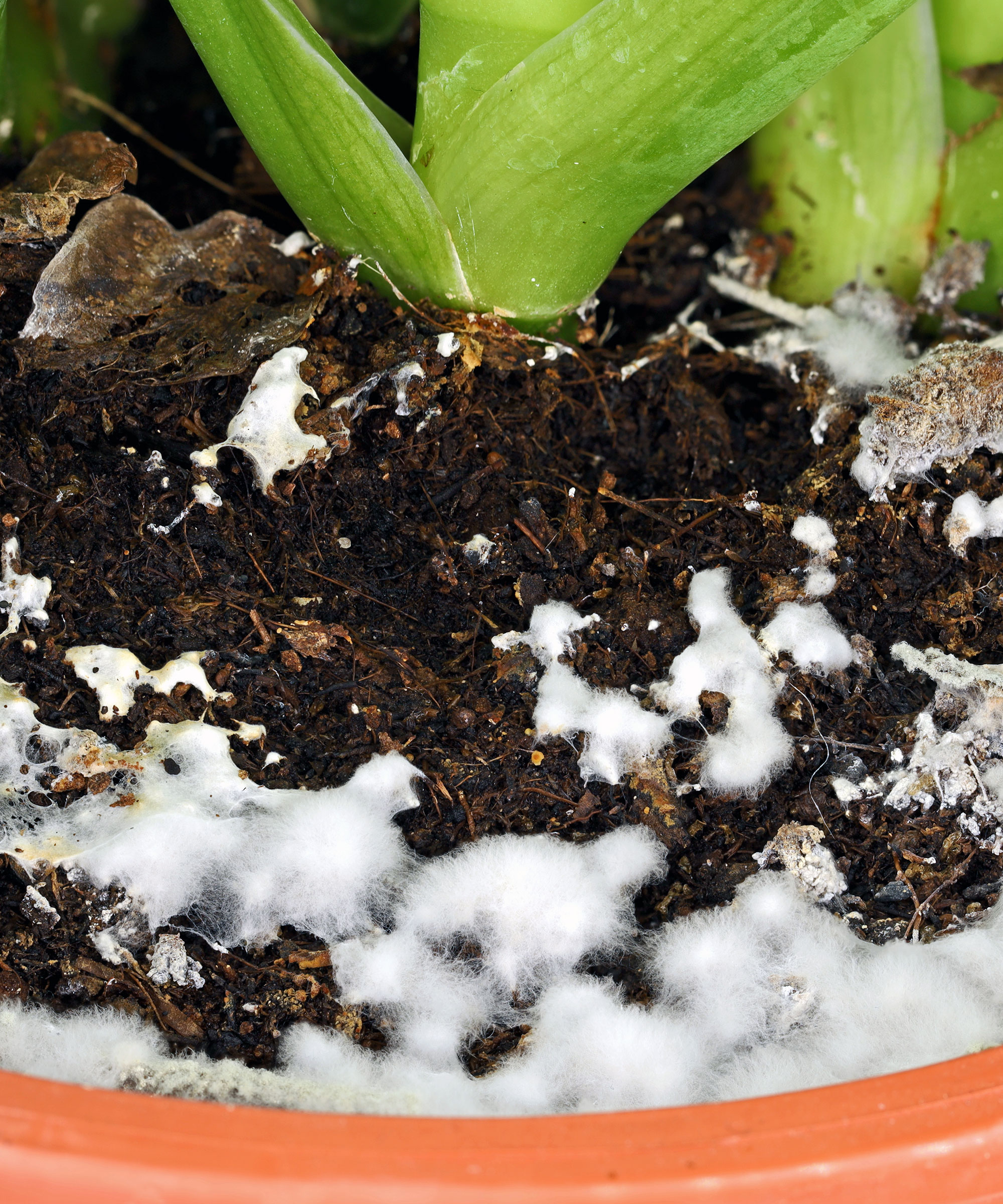
Common causes of mold on houseplant soil
It can be alarming to see a moldy fuzz spreading over the compost beneath prized plants in your indoor garden, but identify the reason behind it and you can successfully resolve the problem.
Manos Kanellos, plant physiologist at Growth Technology explains in more detail: ‘These “molds” are nearly always soporific fungi, that is they feed on decaying organic material, especially products containing wood fibre, composted bark etc. The spores are endemic in the atmosphere and given the right food source, temperature, humidity, light levels and so on they can quickly flourish. It is worth noting that this is less of a problem in soon to be banned peat mixes. Sadly, the presence of these fungi/molds is a price we will have to pay for going away from peat.’
Find out more about the most common causes below:
1. Overwatering your plant
Overwatering is a common indoor plant mistake that can lead to mold taking hold. ‘Sometimes all it takes to resolve it is letting your plant dry out for a few extra days before watering again,’ says Bloomscape's gardening expert, Lindsay Pangborn.
‘Some other tips to avoid over watering are using well-draining soil to prevent the roots from getting too moist, using a pot with drainage holes to allow excess water to escape, and avoiding cooler temperatures.’
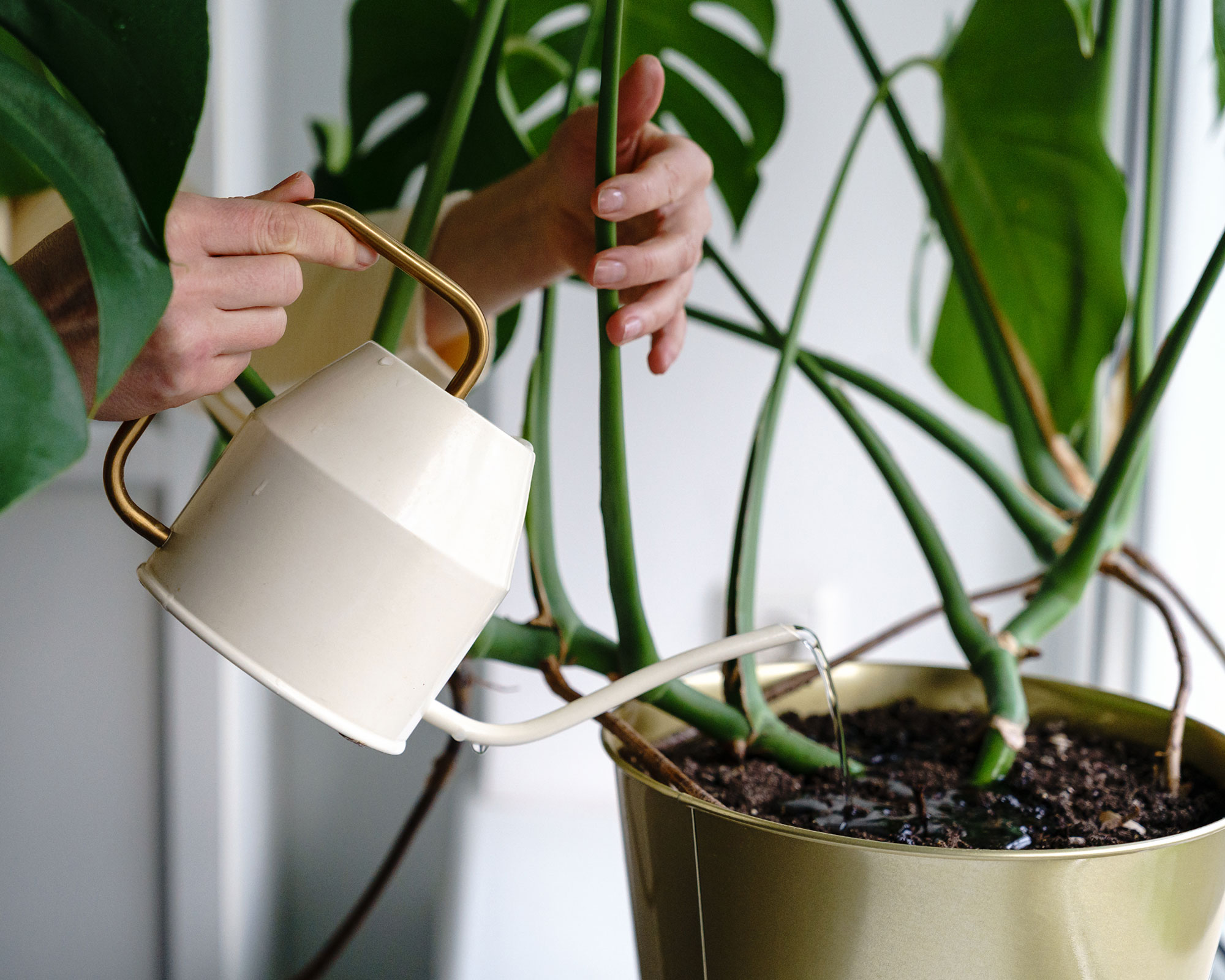
2. Poor drainage
Permanently wet soil is a breeding ground for bacterial and fungal diseases plus it can lead to root rot setting in, eventually killing off the plant.
Choosing an indoor planter and potting compost with adequate drainage is hugely important, as Marquis Matson from the Indoor Nursery blog explains. ‘If a pot doesn’t drain, even regular watering can lead to a build-up of excess moisture that leads to a wet, humid environment that not only encourages mold growth, but can damage roots as well.’
3. Poor air circulation
Placing an indoor plant in an unsuitable position can slow down growth or lead to other problems such as mold developing. Even low-maintenance indoor plants will struggle if you don't meet their basic light and air requirements.
‘To keep your houseplants happy and mold-free, we recommend moving your plants to a light and airy space, as mold doesn’t tend to thrive in dry and bright conditions. This is especially important in winter, as plants can easily end up in dark, stuffy rooms,’ suggests Ben Norman, houseplant expert at Baby Bio.
‘Bring them out into bigger spaces with lots of air circulation, such as on the kitchen windowsill. A handy hint is to then sprinkle cinnamon across the top layer of soil, as this can work as a natural anti-fungal.’
4. Contaminated soil
If mold appears on the surface of a newly potted or recently repotted plant it is possible that this is caused by using compost that has been harbouring mold or fungal spores.
Check the remaining bagged compost for any signs and, if found, follow the steps detailed below. Scrap off any mold on the soil around the base of the plant and replace with fresh compost.
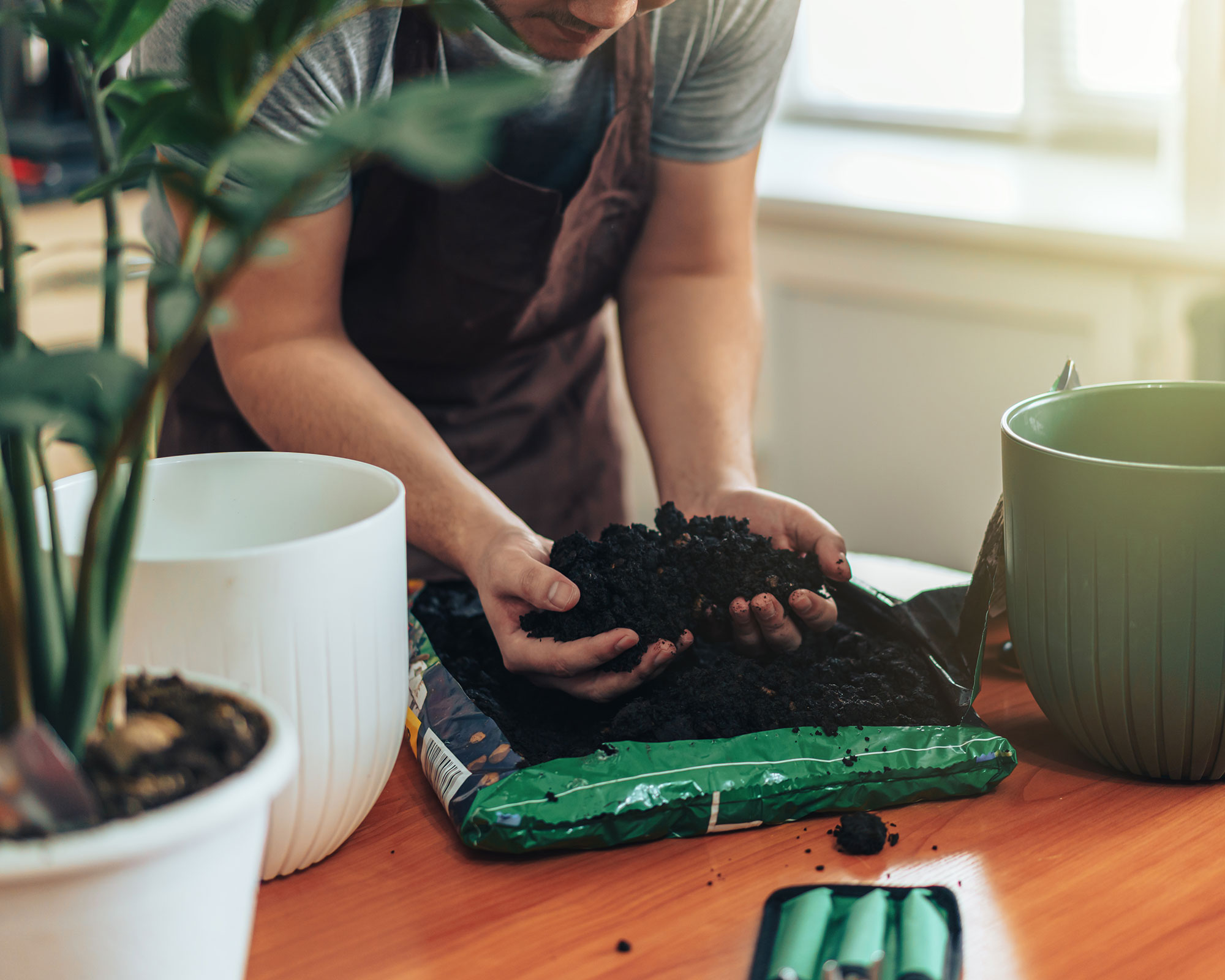
5. Dying foliage left on soil
Everything from a rubber plant to an orchid can lose its leaves as a sign of stress, but these leaves that have been shed and are left on the soil beneath can quickly become a breeding ground for mold and fungal spores.
The easiest way to avoid this happening is to remove and dispose of any fallen foliage and keep the soil's surface free of plant debris.
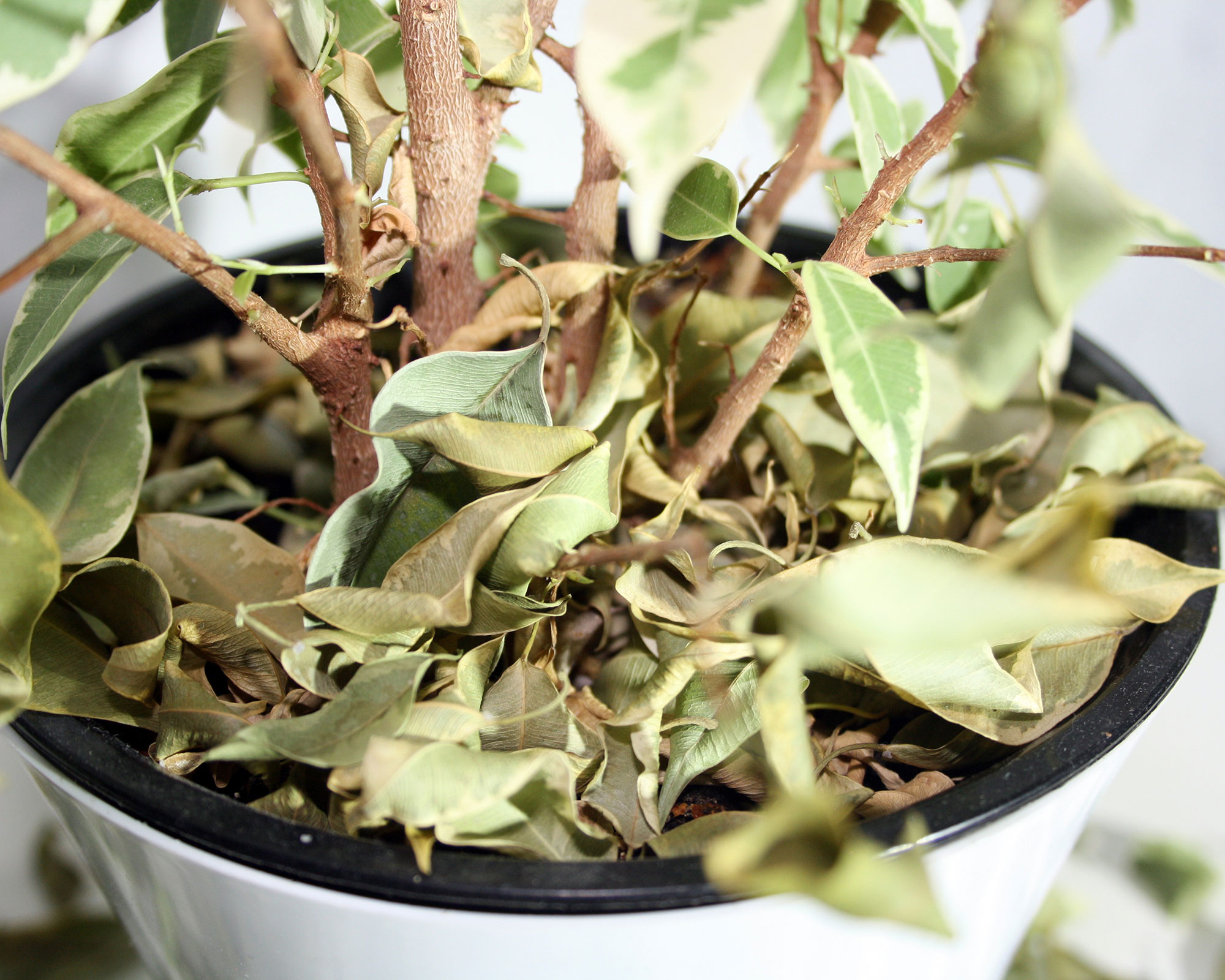
How do you get rid of mold on houseplant soil?
Shocked to see mold growing on the surface of your plant’s soil? Don’t worry it’s pretty easy to deal with. Simply scrape off any areas of mold using the side of a trowel or knife and throw away in the trash. Do make sure to wash and sterilize the tool thoroughly afterwards to avoid transferring the bacteria elsewhere.
Add a layer of fresh, sterile indoor potting compost (available from Amazon) and dust with cinnamon or a commercial fungicide to prevent mold from reappearing.
Do you have to throw moldy houseplant soil away?
You may think that spotting mold in a bag of indoor plant compost calls for drastic action and the hassle and cost of going to buy a replacement, but it really doesn’t. By taking a few simple steps you can safely use the existing soil.
- Using a trowel, carefully remove any mold and dispose along with the household trash, making sure to keep it well away from other plants. It’s also an idea to sterilize the trowel afterwards too.
- Next spread the compost out on newspaper or plastic sheeting and allow it to dry.
- Before using you may wish to add some perlite or horticultural grit to improve aeration and drainage and reduce the chances of mold reoccurring.
Do you have to get rid of the houseplant if it has moldy soil?
‘Absolutely not!’ says Ben Norman. ‘In most cases, if you remove the mold, place the plant in a bright and airy space, and keep a watchful eye on the soil for the next few weeks to make sure the mold hasn’t returned, it should be fine. There’s no need to get rid of your beloved houseplant.’
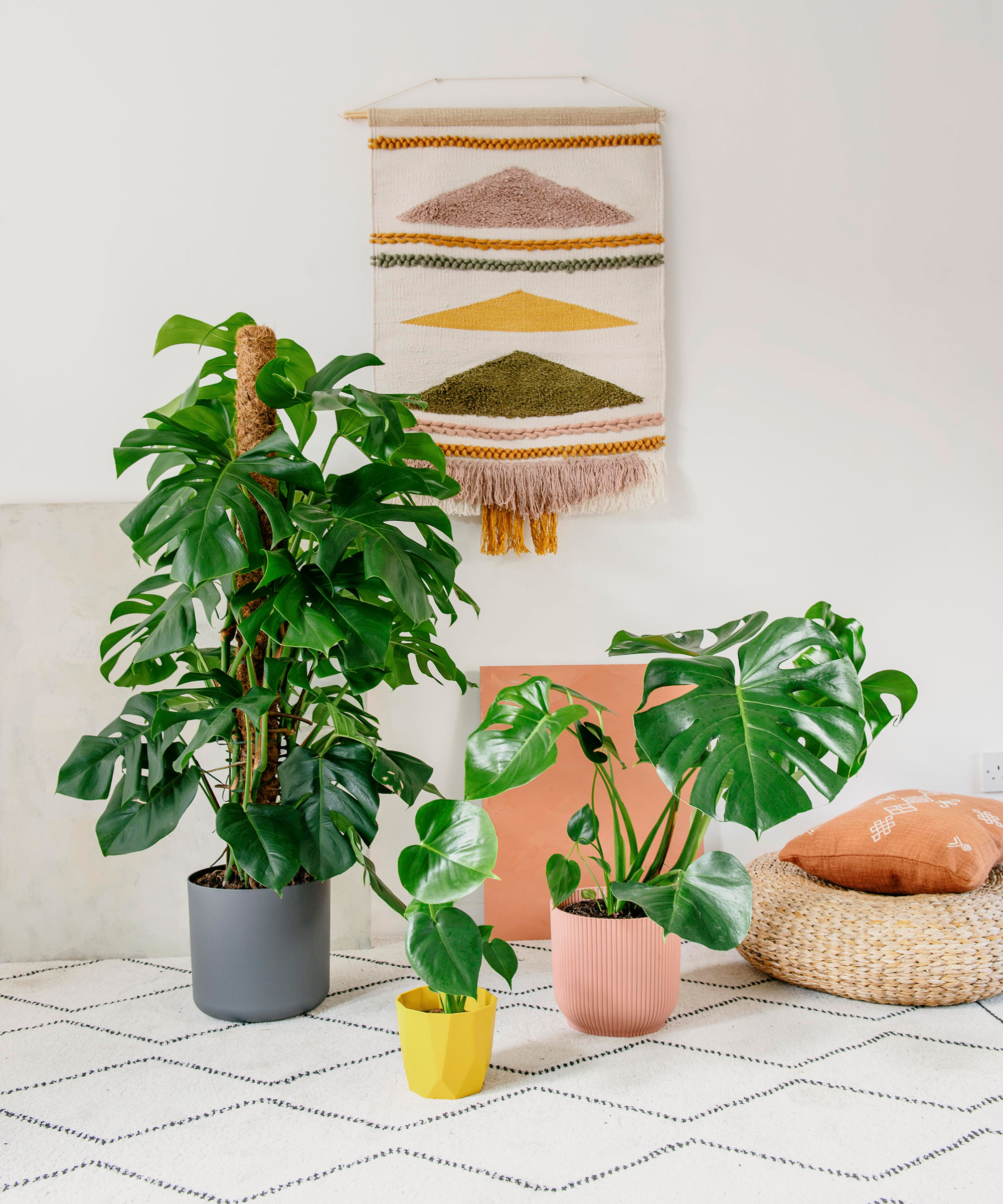
Is mold in plant soil harmful?
Whether mold is a problem on plant soil really depends on its color and type. ‘White mold is harmless. If you see grey mold, that can be bad for your plant’s health,’ says Richard Cheshire, Patch Plants Doctor. ‘Grey mold will have a dusty look and will often be on old parts of your plant, giving them a wrinkly collapsed appearance.’
Fortunately, whether you're a fan of bathroom plants, low light indoor plants or even kitchen plants, finding grey mold on houseplants is pretty rare so there is no need to panic. If you do come across it, avoid breathing it in or touching it with your bare hands. Carefully remove the affected areas of the plant and dispose with the household garbage.

Jill puts her love of plants and all things garden related down to the hours spent pottering around with her Nan and Grandad when she was little. Today she is lucky enough to have a garden of her own in Surrey, England, and spends much of her time writing about them too.
